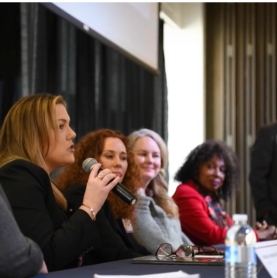Creating connections, identifying shortcomings, and taking collaborative approaches to problem solving were some of the key points discussed at CCRC’s annual San Bernardino Policy Forum on Friday. It was a full house at the California State University, San Bernardino, where 100 attendees listened on as a panel of experts discussed issues associated with the migration of families with children into underserved inland areas.
In an interview about the forum with KVCR, CCRC President & CEO Dr. Michael Olenick talked about the purpose of the forum. “This year we really talked about the fact that the population of kids in Los Angeles is going down and population of kids in the Inland Empire is going up,” said Olenick. “So, the question in San Bernardino is are you prepared for this influx of children and families? A lot of them are low income — do you have the infrastructure to support them the way they need to be supported? There are more kids than there are resources so what do we have to do to make sure there are enough resources to provide that? Sometimes that means county resources, sometimes it’s state resources, and sometimes it’s federal resources. In the end, that means we al have to work together to make sure there are resources for kids in both counties.”
Keynote speaker Dr. Manuel Pastor, Director of the Equity Research Institute at USC, shared data about the population changes experienced by the Inland Empire in recent years. He described how financial motivations, among other reasons, have pushed more families from Los Angeles County into San Bernardino County. This influx of families has highlighted existing shortfalls in services, from education to shelter to child care.
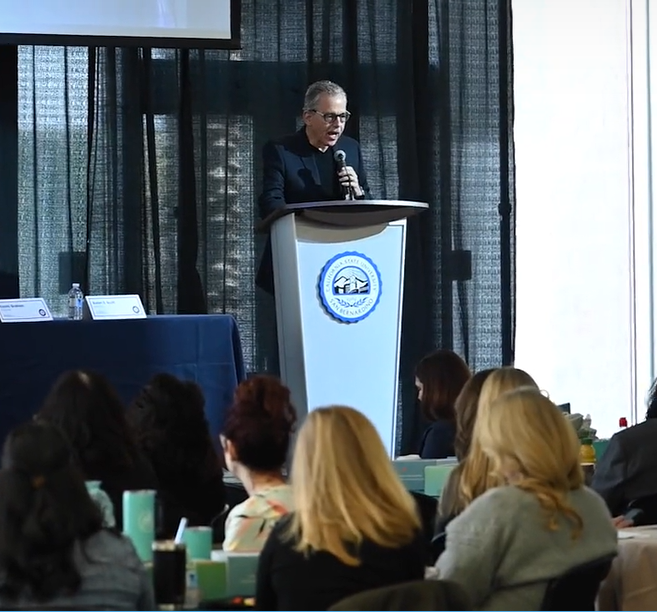
“There’s something we need to really take into consideration in regards to what we’re going to do with the children we have here and their needs and looking at the diversity of representation,” said Gilbert Ramos, San Bernardino County Department of Human Services Executive Director. “We have a diverse population and we need to be mindful of the diversity that’s coming forth into the future.”
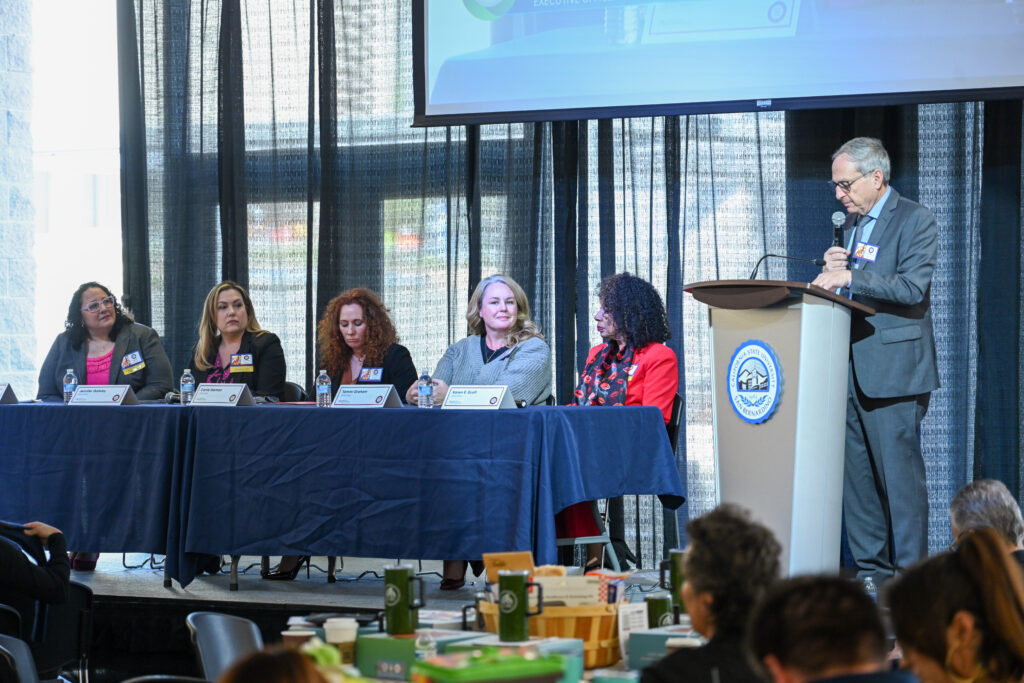
“I lean in heavily to the opportunity to support and lead whole child, whole school, whole community programs and that’s really what policy forum is about,” said Jennifer Gateley, Director of Learning Systems and San Bernardino County Superintendent of Schools. “So, as we look at the education sector, which is an area I advocate for in developing school-based outcomes for children, an essential part of that is leaning into the early learning sector as well. And realizing our students and families have supports and resources and partnerships available in the community from birth to age 5 that contribute to their success from cradle to career.”
Panelists included:
- Karen Scott, First 5 San Bernardino Executive Director
- Carrie Harmon, San Bernardino County Community Development and Housing Department Director
- Barbara Andrade DuBransky, Deputy Director of Riverside County’s Office of Service Integration (OSI) within the county’s Chief Executive Office
- Jennifer Gateley, Learning Systems and Supports at San Bernardino County Superintendent of Schools Director
- Tammi Graham, First 5 Riverside County Executive Director
- Opening remarks from Dr. Mark Agars, Professor of Psychology and Director of the Institute for Child Development and Family Relations (ICDFR) at California State University, San Bernardino
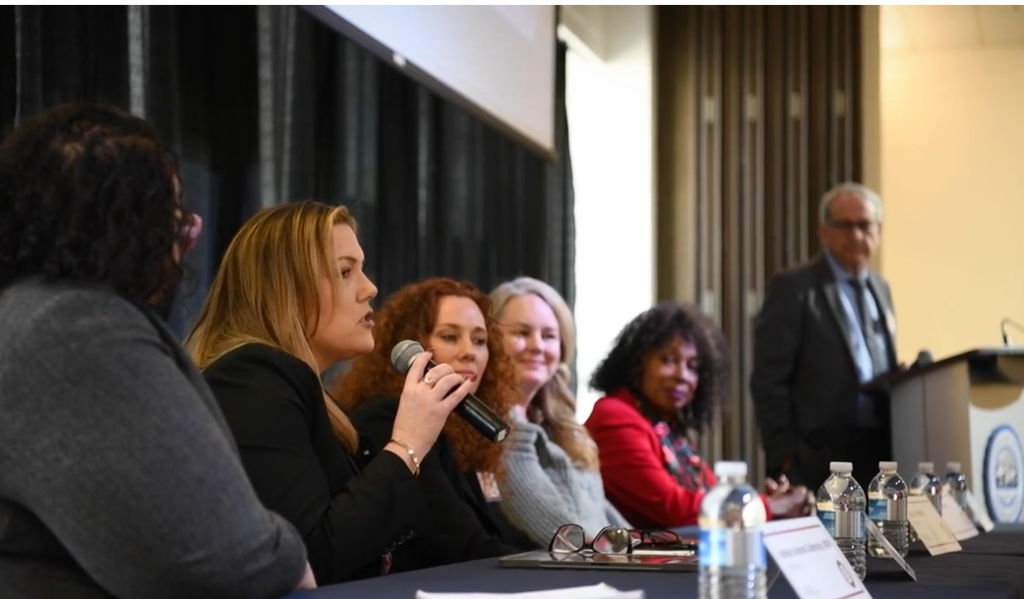
Agars agreed that it’s important to look at the broader needs of families and the ways in which those needs can be met most effectively.
“Thinking about the whole picture that affects how we serve young children in our region. So not just looking at services but the workforce that’s serving children and the challenges they face, and recognizing that in order to do what we need to do at the child level that we’re addressing challenges and problems in the whole system,” said Agars. “It’s the onion analogy – we need to make sure we’re peeling back and seeing that the problems we’re making decisions to solve are in fact at the root of the concerns we have.”
For child care provider and Executive Director Concilio Child Development Centers Pam Robinson, the panel discussion about collaboration really resonated.
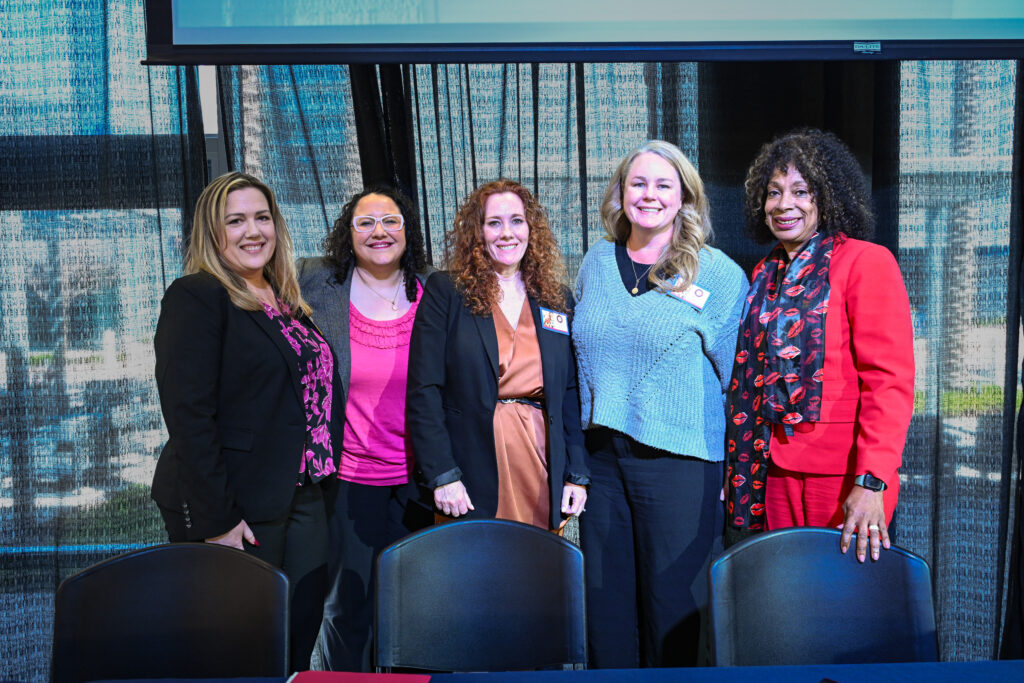
“I believe we’re all kind of working in silos and trying to collaborate, but there’s not – from what I can see – a system where we can come together outside events like this,” said Robinson.
“It’s very important that we are aware of each other’s work and the things we’re doing. One thing we can build upon is that we maximize the resources available,” said Ramos. “We can do so much more together. If we’re trying to do it ourselves, it leaves a gap that just isn’t filled. We’re all serving the same people, the same families, so it’s important to try and ensure we’re wrapping around those services.”

